Is My Hydrangea Dead or Dormant? 5 Signs to Look For
-
Ed Malaker
- Last updated:

The hydrangea is a wonderful plant that can grow to 6 feet tall and produce large, attractive, fragrant flowers. However, it is a deciduous plant that will lose all of its leaves in the fall, which can cause many people to worry if it’s dead. If you aren’t sure what’s happening with your plant, keep reading as we list several signs to look for to help you determine the state of your hydrangea, along with tips and tricks that will help it produce more flowers.

The 5 Signs Determining If a Hydrangea Is Dead
1. Dead Leaves and Flowers
The hydrangea is a deciduous plant that loses its leaves and flowers each year in the fall. When the leaves dry up and fall off, that is a sign of a healthy plant. However, if the leaves remain on the plant, it suggests that the hydrangea is not able to shed them properly, and it means the plant is dead, especially if there are quite a few left on the plant when spring starts.
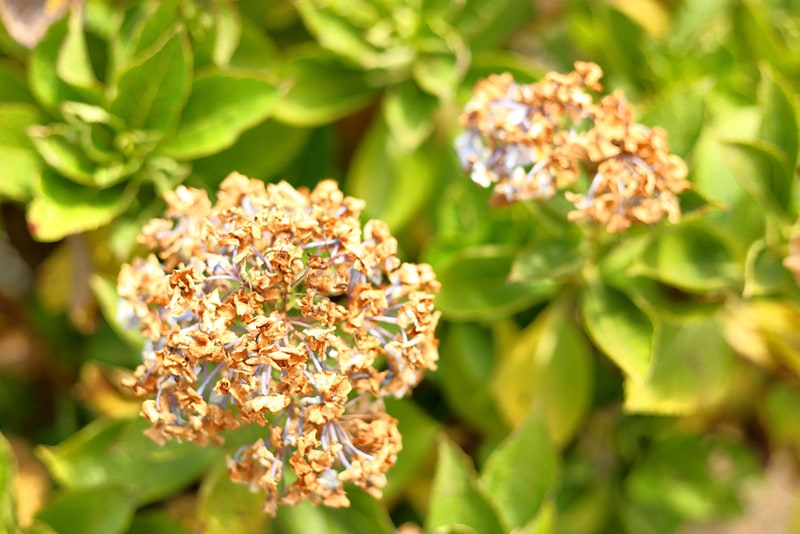
2. Stalled Growth
Your plant should start sprouting new branches in early spring, producing new leaves and flowers. If you notice that your hydrangea is not growing in the spring, there is a good chance that it is dead, especially if you also see wilted or withered leaves, flowers, and stems.
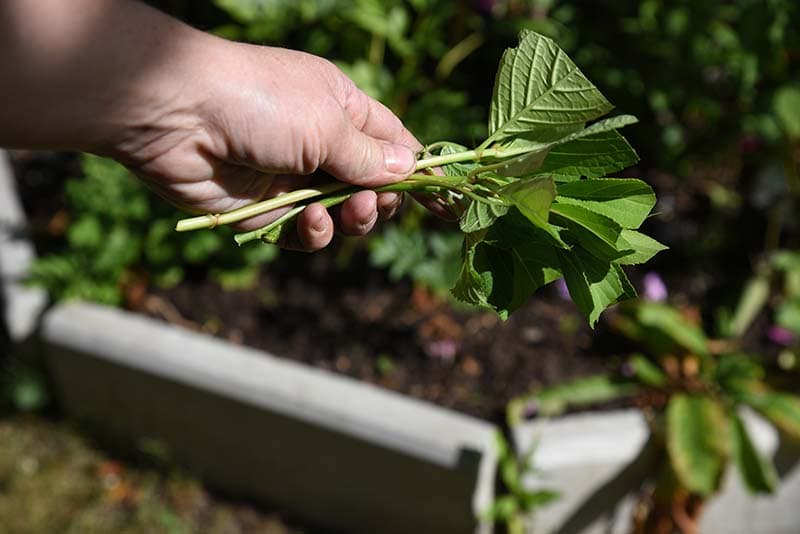
3. Dead Stems
If you suspect that your hydrangea is dead, one of the easiest ways to check is to use a sharp knife or even your fingernail to scrape away a small amount of the bark on one of the newer branches. If the wood underneath is green, your plant is alive and likely just temporarily dormant. However, if the wood beneath is brown, there is a good chance that the plant is dead.
4. Wilted Flowers and Stems
If the flowers and stems are suddenly showing signs of wilting during the summer or fall, it could be a sign that the plant is struggling to grow and dying.
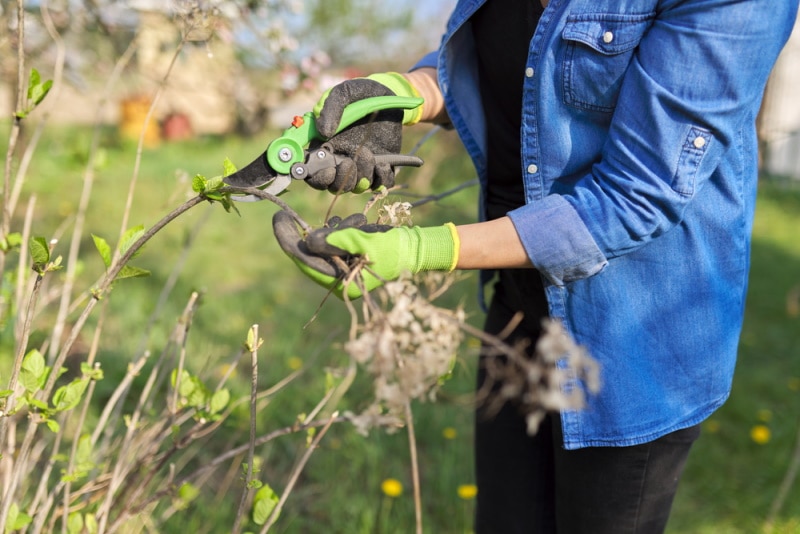
5. Winter Chill
The hydrangea is easy to grow across the United States, enjoying growing zones from 4 to 9, depending on the variety. However, extremely cold temperatures, especially over an extended period, can cause the plant to stay dormant longer in the spring and might even result in the death of the plant. If you had a harsh winter, you might need to wait a little longer to see new growth, but check it after a short time using the scraping method to ensure that it isn’t dead.

Reviving a Stressed or Dying Plant
- Drooping Leaves – Drooping leaves are usually a sign that the plant is not getting enough water. The weather could be too hot or the soil too fast draining. Revise your schedule to provide more water, and choose or improve the soil so it contains more organic material to help retain moisture. You can also break up the soil so it isn’t too compact, enabling water to reach the roots. If you notice that your hydrangea is getting too much sunlight, move it, or plant other plants nearby that will cast shade on it.
- Yellow Leaves – Yellow leaves indicate that your hydrangea is not getting enough sunlight, especially if the leaves are only yellow on one side. If your plant is getting more than 6 hours of direct sunlight each day, move it to a shadier location, or plant other plants nearby that can help cast shade. Removing the affected leaves and stems can help the plant recover by stimulating new growth.
- Frost Damage – Frost damage will occasionally occur, especially if you live in an area that experiences late frosts, resulting in black or brown foliage and stunted growth. Covering the plant with a bag before the temperature drops can help protect it, or you can bring it inside if possible. If damage occurs, prune away the damaged stems but avoid cutting into the good wood.
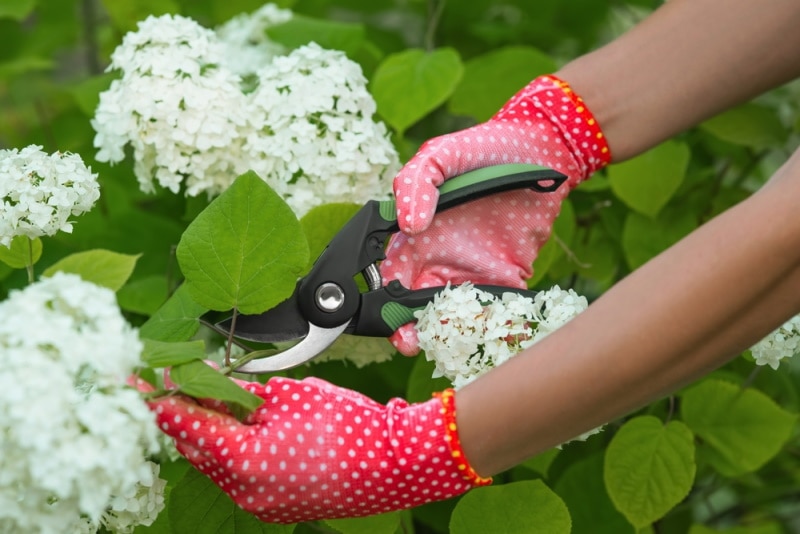
Other Tips and Tricks for Growing a Healthy Hydrangea
- Plant your hydrangea in the fall or early spring to give it plenty of time to establish itself before the next fall.
- Plant your hydrangea where it will receive plenty of morning sun but be in the shade before the hot afternoon temperatures arrive.
- Hydrangeas like well-draining soil with plenty of organic material to help retain moisture and provide valuable nutrients. Poor-draining soil can lead to root rot.
- Adding mulch under the hydrangea will help the soil retain moisture longer and protect it from bright sunlight and high temperatures. Mulch also breaks down slowly, adding important nutrients to the soil.
- You don’t usually need to cut back hydrangeas if you provide them with plenty of space, unless you notice dead wood resulting from frost or other damage.
- You can change the color of the flowers that many hydrangeas produce by altering the pH of the soil. A low pH will produce blue flowers, while flowers in soil with a high pH will be red. In between those, you will see various shades of purple. However, be aware that raising the pH above 7.5 can damage the plant.
- Watering your hydrangea in the morning during the summer can help prevent it from wilting later in the day when the high temperatures arrive.
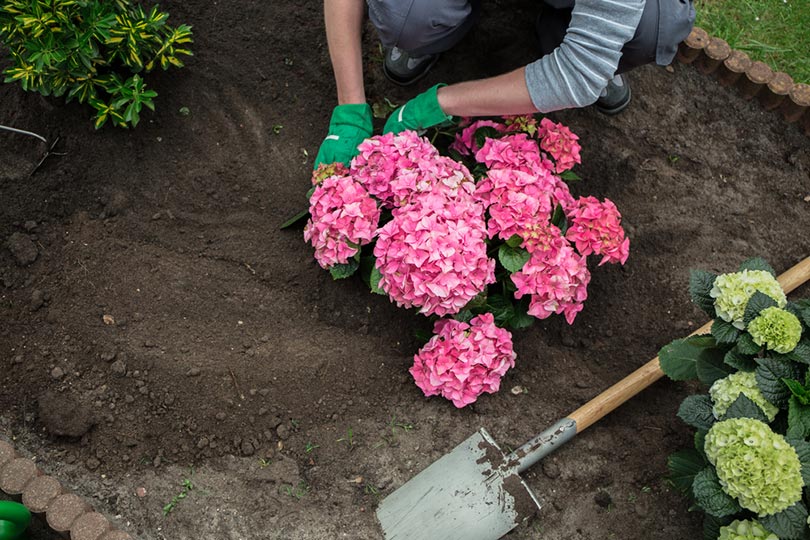

Conclusion
Your hydrangea is a deciduous plant that will lose its leaves and look dead each fall, but it is likely just dormant and waiting for spring to arrive, especially if you scrape away the bark and notice green growth underneath. However, if many dead leaves remain on the plant long after they turn brown, it might be dead, and you will know for sure if you don’t see any new growth in early spring. When there is a danger of frost, protect the plant from damage by covering it or moving it inside, and plant it where it will get plenty of morning sun and afternoon shade. Water it regularly, and add mulch to provide an optimal growing environment for your hydrangea, which will help it produce more flowers.
Featured Image Credit: ChiemSeherin, Pixabay
Contents